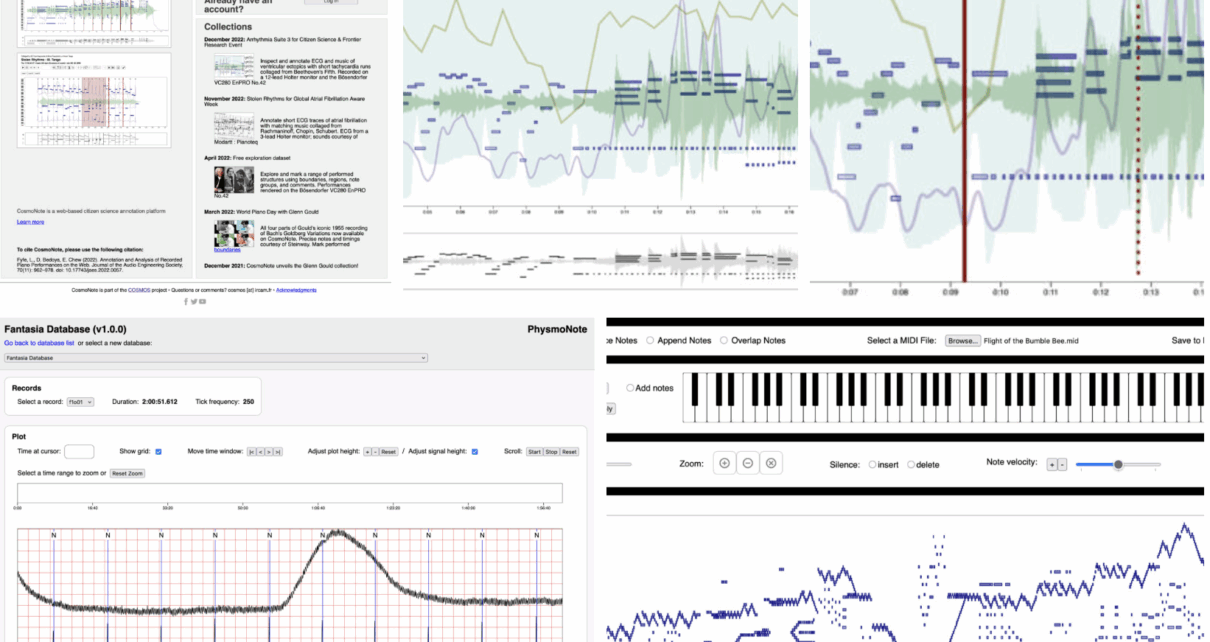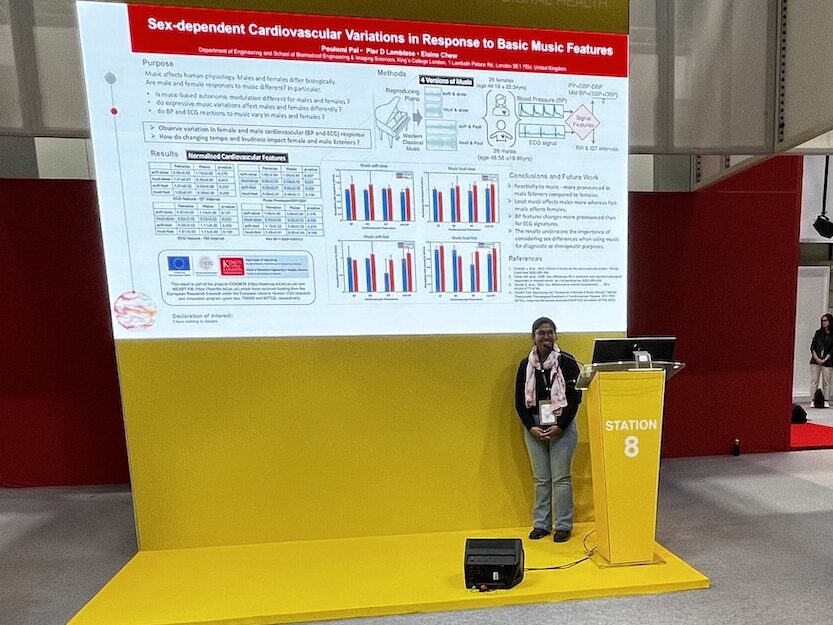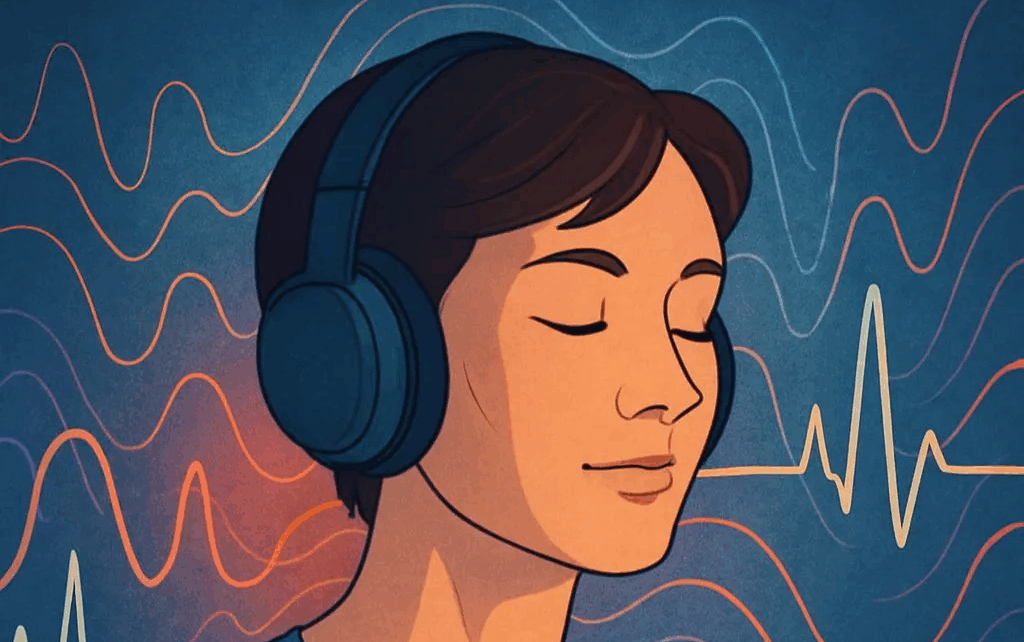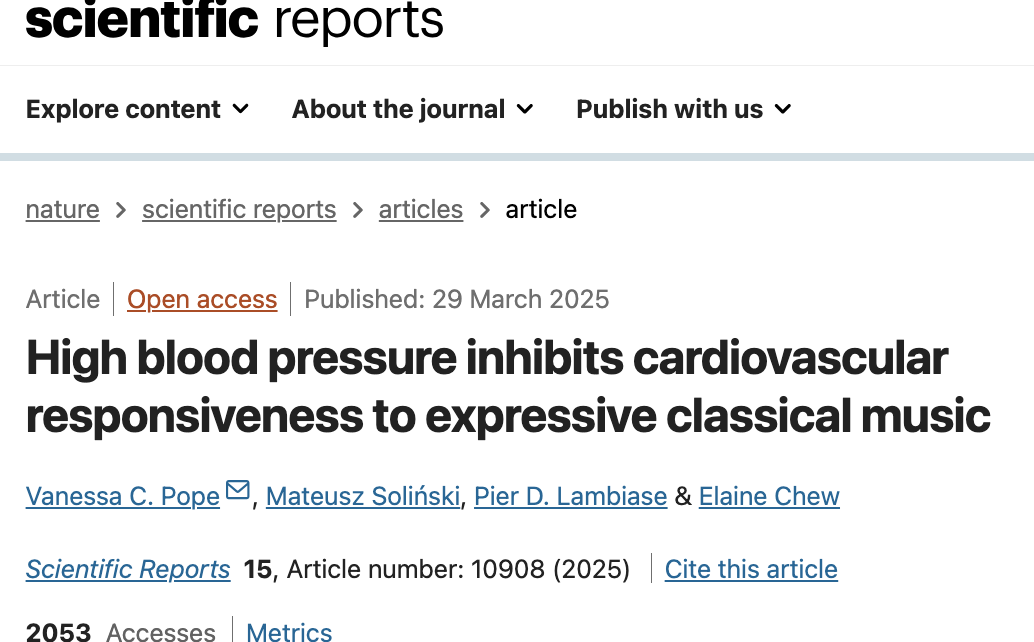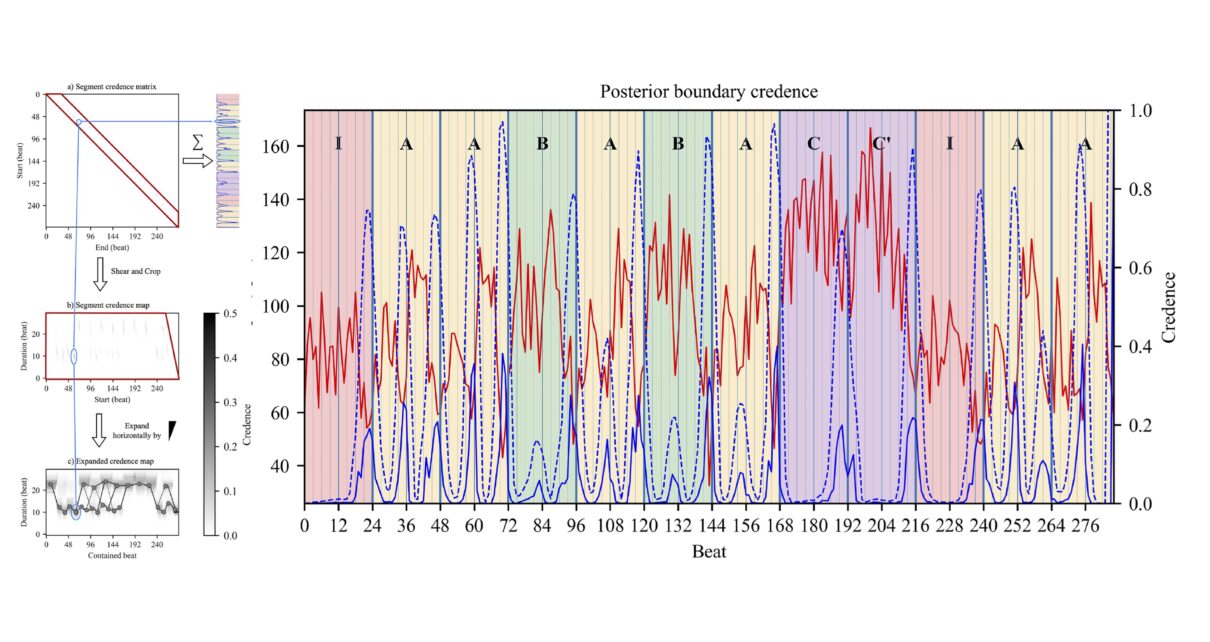Traces.js, the JavaScript library for presenting and annotating music++ time series data on the web debuts at the Web Audio Conference
Publications
Wentao Hao presents SPAR-RT at TEchnologies for Music NOtation and Representation
Wentao Hao presented latest findings on applying SPAR to music audio signals at the 10th TENOR Conference in Beijing
Now in PLOS One ! Science of music-based citizen science : How seeing influences hearing
Published in PLOS One : How seeing and hearing affects citizen science annotation tasks, critical for reliable algorithmic analysis of music
Poulomi Pal gives two moderated presentations at ESC2025 Research Gateway
Poulomi Pal highlights the differences in response between males and females and how music can be used as a tool for hypertension diagnosis.
Natalia Cotic on the Digital Health Stage at the European Society of Cardiology ESC Congress
Natalia Cotic and Poulomi Pal present at the ESC Congress and highlight the role of music in cardiovascular medicine.
The Unexpected Symphony Within: How Music Reveals the Resilience of Your Body by Mr. Wells on Medium
Medium article sums up Scientific Reports paper “High blood pressure inhibits cardiovascular responsiveness to expressive classical music
New Finding: High blood pressure alters body’s reactivity to music
How music’s tempo and loudness interact with baseline blood pressure in Nature Scientific Reports and on Classic FM’s website
New CardioPulse article: Seeing music’s effect on the heart
CosmoNote and HeartFM enabled visualising, playing, and annotating of music and heart data highlighted in European Heart Journal
Predicting ensemble musicians’ heart rates with interpretation map and expressiveness
Computational model captures up to 60% of variability in musicians’ heartbeat intervals with map of musicians’ jointly decided actions
Automatic Extraction of Phrase Boundary Credences and Interpretation Comparisons
Finding plausible phrase boundaries from tempo and/or loudness data applied to analysis of Mazurka interpretations now out on Music & Science

